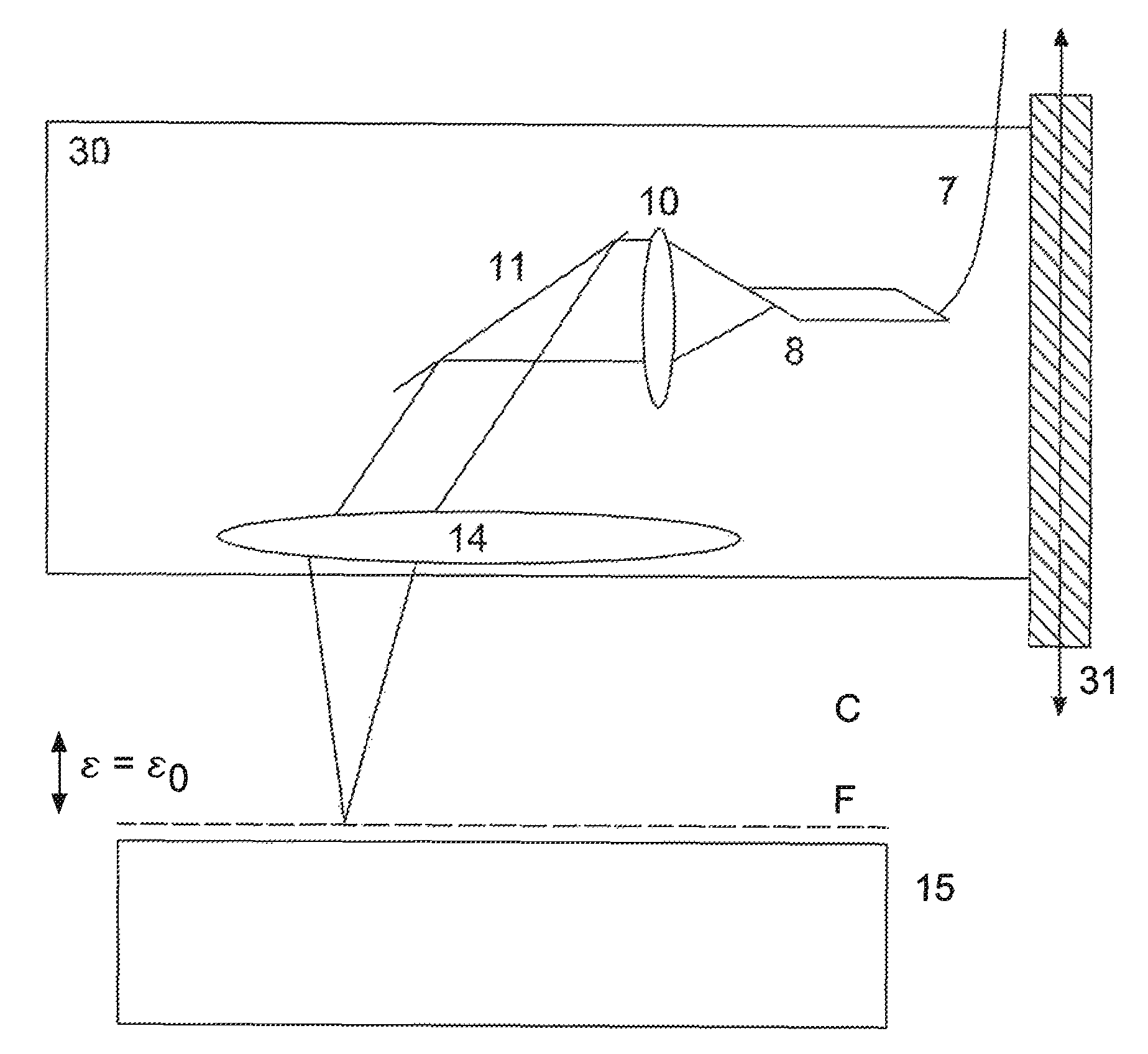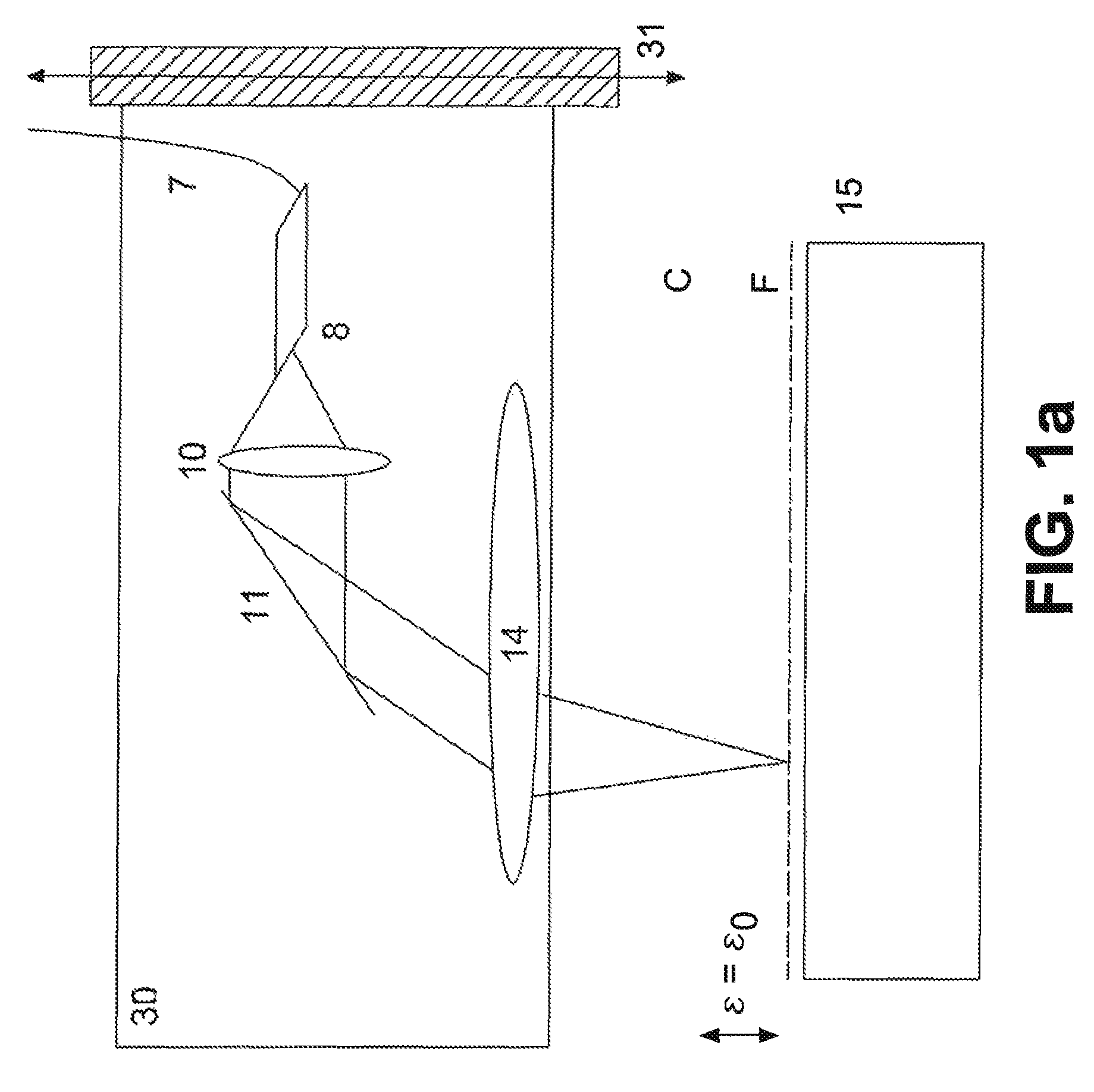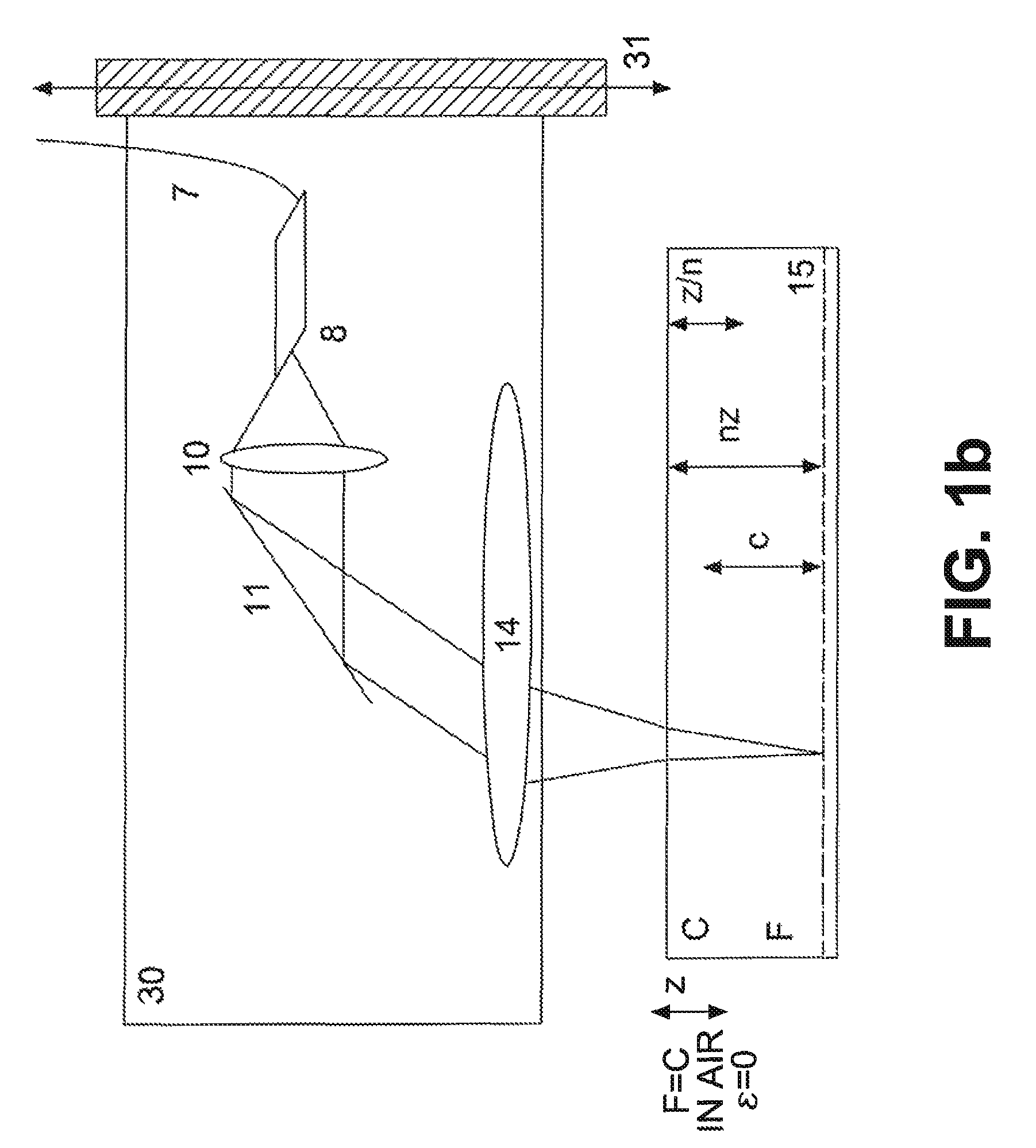Compact high resolution imaging apparatus
a high-resolution, compact technology, applied in the direction of interferometers, applications, instruments, etc., can solve the problems of high mechanical stability, high loss, and loss, and achieve the effect of low loss and high mechanical stability
- Summary
- Abstract
- Description
- Claims
- Application Information
AI Technical Summary
Benefits of technology
Problems solved by technology
Method used
Image
Examples
Embodiment Construction
[0053]Various features of the present invention, as well as other objects and advantages attendant thereto, are set forth in the following description and the accompanying drawings in which like reference numerals depict like elements.
[0054]An OCT device may involve and make use of techniques known in the art and described in GB patent (Younguist Davies) no. 8611055; U.S. Pat. No. 5,459,570, U.S. Pat. No. 5,321,501, U.S. Pat. No. 5,491,524, U.S. Pat. No. 5,493,109, U.S. Pat. No. 5,365,335, U.S. Pat. No. 5,268,738, and U.S. Pat. Nos. 5,644,642 and 5,975,697 (Podoleanu), which are herein incorporated by reference. These devices can be constructed in bulk or optical fiber, and have means for transversally scanning the target, means for longitudinal scanning of the reference path length, means for phase modulation, means for controlling the polarization stage as bulk or fiber polarizer controllers, and have means for compensating for dispersion. In embodiments of the present invention, ...
PUM
 Login to View More
Login to View More Abstract
Description
Claims
Application Information
 Login to View More
Login to View More - R&D
- Intellectual Property
- Life Sciences
- Materials
- Tech Scout
- Unparalleled Data Quality
- Higher Quality Content
- 60% Fewer Hallucinations
Browse by: Latest US Patents, China's latest patents, Technical Efficacy Thesaurus, Application Domain, Technology Topic, Popular Technical Reports.
© 2025 PatSnap. All rights reserved.Legal|Privacy policy|Modern Slavery Act Transparency Statement|Sitemap|About US| Contact US: help@patsnap.com



